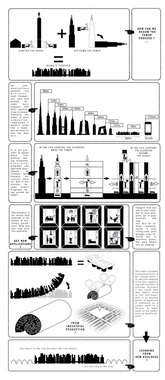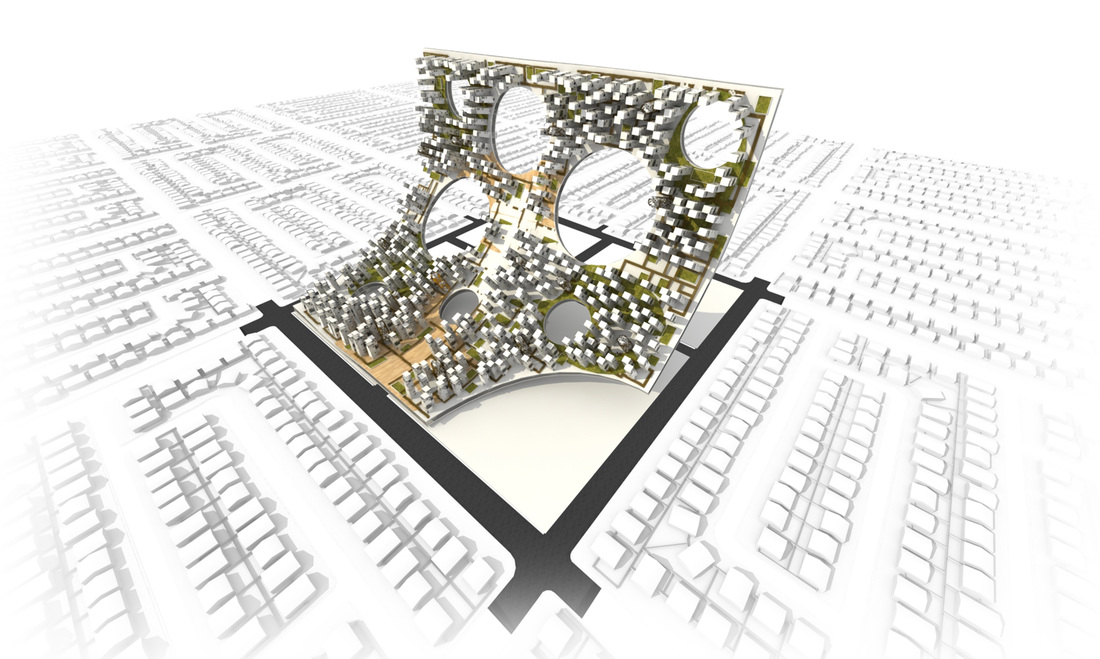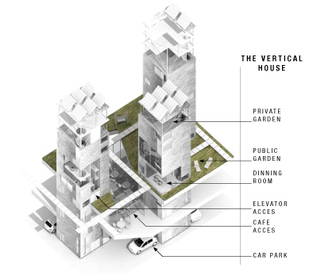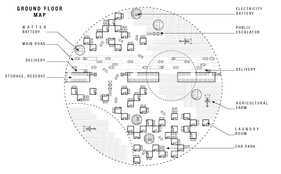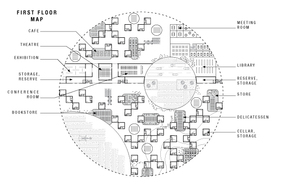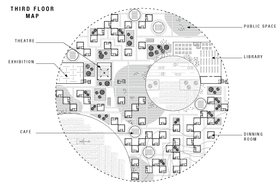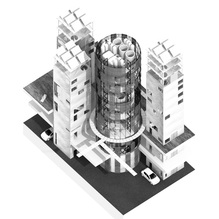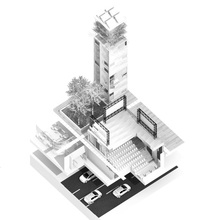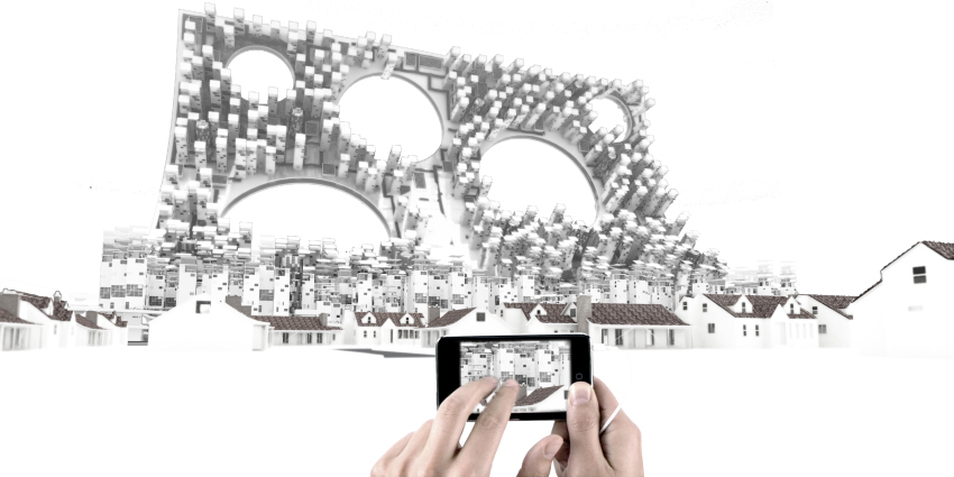SMARTSCRAPER
2012/Evolo competition //Published on competition poster// Team: Adrien Piebourg & Bastien Papetti
|
How to live vertically? Climb higher and higher does not seem to change the way we live. Most people wish to live in individuals houses. So we have to be interested by the pavilion. But the problems is now well established: sprawl, lack of diversity and density, ghetto, poverty of an architectural uniformity etc.. Our question is: How to involve everyone to live at home with the qualities that implies, and living together, as in the heart of the city? Now let’s found where the tower’s history started. This goes back to Elisha Otis, who was the inventor of what we call now the Elevator. This began the conquest of the sky and generate projects competing for prowess and sizes. What could be the lift of the twentieth? Within the house, he would like to be a remote control to move from one floor to another, but also from one program to another. The function of living would be challenged in the object. The house become as smart as the Smartphone, and incorporates multiple applications. One application per floor. The elevator is for house that Internet is for phone. A necessary parameter! Now you can “zap” your life spatially. Imagine yourself in your room, put on your slippers, go in your elevator, and zap! You will be almost instantaneous in your living room, your garage, your favorite bar or business place, the park where you go jogging! The new tower is born, or rather, what is the first cell. We must now find the idea of “Tower”. It’s going to go through the quantity. This lonely cell is only anecdotal, but multiplied and intensified, it marks its existence. It is now clearly identifiable as an “object”. The idea of Tower is inseparable from the idea of city, so we have now an object in the city who looks like a city. Perceptions are distorted. The object in the city became literally the “city object”. |
|
" On peut se demander sérieusement si la ville, en tant qu'agglomération ponctuelle et réservoir de toutes les activités humaines localisées dans les plus petits espaces, à encore un avenir. Cette question revêt toute sa valeur si l'on tient compte du fait que, dans notre société, les contacts physiques perdent leur signification, grâce a l'existence de moyens électroniques. Dans ce village global en lequel le monde se mue petit à petit en raison des nouveaux moyens de communication, la participation à la vie communautaire est remplacée par une présence audio-visuelle. L'information est devenue plus importante que la participation " Structures urbaines de demain Justus Dahinden, 1972 |
Programmatic fragments
|
Urban section

